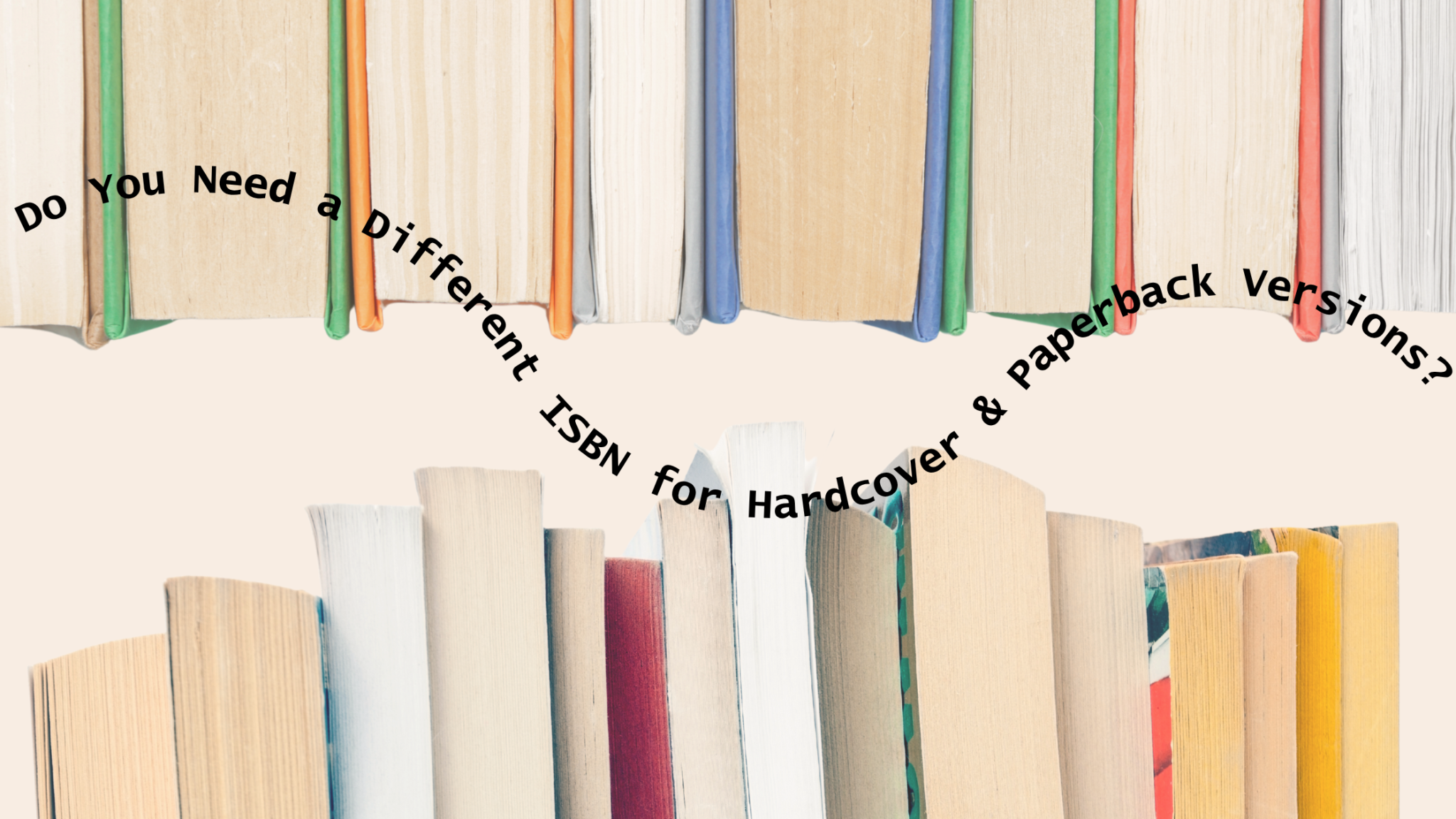Getting your book into the hands of readers is the ultimate goal. For many, this means offering a variety of formats, from the classic paperback to the sturdy hardcover. But as you prepare to publish, a critical question arises: Do you need a different ISBN for each version?
The unequivocal and straightforward answer is yes. A hardcover and a paperback edition of the same book are considered distinct products in the publishing world, and each requires its own unique International Standard Book Number (ISBN). This isn’t just a matter of preference; it’s a fundamental rule of the global book supply chain.
The Core Reason: An ISBN Identifies a Specific Product

To understand why different formats need separate ISBNs, you must first grasp the core purpose of an ISBN. An ISBN isn’t just a random number; it’s a unique product identifier. It serves as a digital fingerprint for a specific book, providing crucial information that helps everyone in the publishing ecosystem, from booksellers and distributors to libraries and readers, find, order, and track the correct version.
An ISBN contains coded information about the title, publisher, and, most importantly, the specific edition and format of the book. The ISBN for your hardcover edition tells a bookstore’s inventory system that it’s a durable, case-bound version of your book. The ISBN for your paperback, on the other hand, identifies it as a less expensive, flexible-cover edition.
The Consequences of Using the Same ISBN
Attempting to use the same ISBN for different formats can lead to a host of logistical nightmares and frustrating customer experiences:
- Inventory Chaos for Retailers: Imagine a customer goes to a bookstore and asks for a copy of your book. The clerk looks up the ISBN in their system, but because you’ve used the same number for both formats, the system shows that the ISBN is for both a hardcover and a paperback. The clerk then has to guess which one the customer wants, or worse, the system might not be able to process the sale accurately, leading to confusion and potential lost sales.
- Incorrect Orders and Returns: The same problem extends to online retailers and distributors. A reader might specifically order the paperback edition, but because the ISBN isn’t unique, the warehouse could mistakenly ship them the more expensive hardcover. This results in returns, negative reviews, and a tarnished reputation for you as the author and publisher.
- Skewed Sales Data: One of the most important benefits of an ISBN is its ability to track sales data. A unique ISBN for each format allows you to see exactly how many hardcover copies you’ve sold versus paperbacks. This data is invaluable for making future decisions about print runs and marketing strategies. If you use the same ISBN for both, your sales data will be muddled and inaccurate, making it impossible to get a clear picture of your book’s performance.
A Deeper Dive into the “Different Formats” Rule
The rule extends beyond just hardcover and paperback. Any significant change in the book’s physical or digital form requires a new ISBN. This includes:
- E-book vs. Print: E-books are a completely different format from physical books. Even if the content is identical, the lack of a physical binding, paper, or print dimensions means it requires its own, distinct ISBN.
- Audiobooks: A book read aloud is another format entirely. The audiobook version must have its own ISBN to be cataloged and sold correctly.
- Large Print Editions: A large-print book is physically different from its standard-size counterpart. It has a different page count, different dimensions, and a different purpose (accessibility for readers with visual impairments), all of which require a unique ISBN.
Why This is a Good Thing for You
While buying multiple ISBNs might seem like an added expense, it’s a crucial investment in your book’s professionalism and long-term success. Having a unique ISBN for each format allows you to:
- Establish a Professional Presence: A correctly assigned ISBN for each format shows that you understand and follow industry standards, making your book more appealing to booksellers, libraries, and other professional channels.
- Streamline Distribution: Distributors and retailers use ISBNs to manage their catalogs. A separate ISBN for each format simplifies this process and ensures your book is listed and sold correctly everywhere.
- Track Performance with Precision: With unique ISBNs, you can easily track the sales of your hardcover, paperback, and e-book versions independently, giving you valuable insights into which format your audience prefers.
Frequently Asked Questions
- Do I really need a separate ISBN for my paperback and hardcover? What if the content is exactly the same?
Yes, you absolutely do. Even if the content is identical, the physical format of the book is different. The ISBN identifies the specific product being sold. A hardcover is a different product from a paperback in terms of cost, weight, durability, and retail price. Using the same ISBN would create major inventory and sales tracking problems for retailers and distributors.
- Can I use the same ISBN for an e-book and a print book?
No, you cannot. An e-book is a completely separate format from a print book (whether it’s paperback or hardcover). E-books lack a physical binding, page dimensions, and are often sold through different channels. Each e-book format (e.g., EPUB, MOBI) should ideally have its own ISBN, though many digital distributors will provide a unique identifier for you.
- What if I have a print-on-demand (POD) version and an offset-printed version? Do they need separate ISBNs?
If both versions are the same format (e.g., both are paperback) and have the same content, they generally do not need separate ISBNs. The ISBN identifies the book’s edition and format, not the specific printing method. However, if there are any changes to the book’s size, page count, or content between the two printing methods, a new ISBN would be required.
- Why do some books have two ISBNs listed on the copyright page?
It’s common for a publisher to list the ISBNs for all available formats on the copyright page. For example, a book might show one ISBN for the hardcover edition, another for the paperback, and a third for the e-book. This is done for clarity and to help readers and retailers identify the different versions of the book.
- I have a paperback book and I want to make a large-print version. Do I need a new ISBN?
Yes. A large-print edition is considered a separate product. It has different physical dimensions, a different page count, and is designed for a specific audience (those with visual impairments). These differences are significant enough to warrant a new, unique ISBN.
- Where do I get separate ISBNs for my different formats?
You purchase ISBNs from your country’s designated ISBN agency. In the United States, that is the ISBN Service. In the United Kingdom, it is Nielsen. You will typically purchase them in blocks of 10, 100, or 1,000, which is more cost-effective if you plan to publish multiple books or formats.
Conclusion
In the world of publishing, an ISBN is far more than a simple number; it’s a product identifier that brings order to a complex global supply chain. By assigning a different ISBN to your hardcover and paperback editions, and to every other format you create, you are not only following industry best practices but also ensuring that your book is accurately represented, easily discoverable, and successfully sold. It’s a small but essential step that can make a world of difference for your publishing career.


